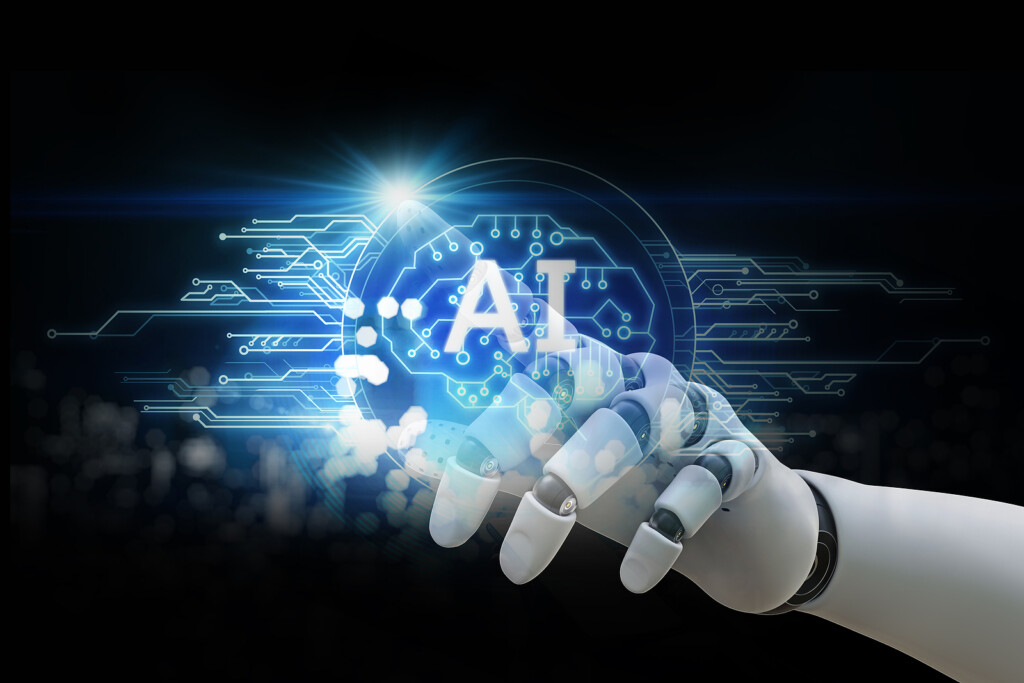
AI has made the news this week with the BBC reporting that BT are shedding 55,000 jobs and up to a fifth of these will be replaced with AI.
So, it seemed fitting that I should write a blog about AI and how it will affect our clients. Then I thought, what better way to illustrate its uses, than to get AI to write the blog for me!
What follows is the blog as written by open AI and ChatGPT .
To do this I simply opened the interface and entered the following:
And the AI produced the following (in less than 30 seconds):
AI, or Artificial Intelligence, is like a computer program, but it’s more advanced. Imagine if you could train a computer to think and learn like a human. That’s essentially what AI does.
There are two main types of AI:
Narrow AI: These are AIs designed to do a specific task like recommending songs on Spotify or answering customer service questions. They can only do what they’ve been programmed to do, nothing more.
General AI: These are the AIs that we see in sci-fi movies, like robots that can perform any intellectual task a human can do. As of my knowledge cutoff in 2021, this type of AI doesn’t exist yet.
The AI we currently use most is machine learning. This is a type of AI that learns from data and gets better over time. Think of it like this: if you show a child a hundred pictures of dogs and tell them “this is a dog”, they will learn to recognize dogs. Machine learning is similar. If you feed it enough data and tell it what to look for, it will learn to recognize patterns and make predictions based on those patterns.
AI and the Workforce
AI can be a powerful tool for businesses. It can automate routine tasks, provide insights from large amounts of data, and improve efficiency. For instance, in our field, AI could help automate tasks like data entry, bookkeeping, and even tax preparation.
However, while AI can make businesses more efficient, it also has potential drawbacks. The major concern is job displacement. If AI can do a job more efficiently and cheaply than a human, businesses may choose to use AI instead of human labor. This could lead to job losses in certain sectors.
On the positive side, AI also creates new jobs. We need people to develop, maintain, and improve these AI systems. Plus, by automating routine tasks, AI could free up workers to focus on more complex and creative tasks.
Also, it’s important to understand that AI is just a tool, and it’s only as good as the data it’s fed. So, for instance, in accounting, while an AI might be able to crunch numbers, it can’t replicate the human understanding of a business’s unique circumstances and needs.
In summary, AI is a game-changer, but like any change, it comes with both opportunities and challenges. We need to embrace the efficiencies and improvements it brings, but we also need to be aware of, and plan for, the potential impact on the workforce.
Conclusion…from a human perspective
Apart from the use of American English I think it did a pretty good job. ChatGPT is an AI designed to understand and generate human-like text, and as such has some great potential applications such as:
- Customer Support: Chatbots powered by GPT can handle a large portion of customer queries, freeing up human staff to handle more complex issues.
- Content Creation: GPT can generate text for a variety of content types such as blog posts, articles, and social media posts. While it doesn’t fully replace human writers, it can assist in generating drafts or ideas.
- Education and Tutoring: GPT can be used to provide explanations and answers to students’ questions in a personalised learning environment.
- Interactive Entertainment: GPT can be used to power characters in video games, create interactive stories, or even assist in tabletop role-playing games.
- Coding Assistance: With the right training data, GPT can assist in generating code, helping to write functions, and suggesting fixes for bugs.
- Language Translation: While not its primary function, GPT models can provide reasonably accurate translations between different languages.
- Personal Assistant: GPT can be used to build AI personal assistants that can help schedule meetings, answer queries, set reminders, and more.
The uses of AI can be wide ranging from changing the way we interact with a computer, to self-driving cars to uses in healthcare to predict illnesses.
The future of this technology is potentially transformative, but it doesn’t come without its dangers such as deepfakes where AI can generate realistic sounding images and voices. As with all technological advances we must learn how to use it and control it, which will undoubtedly lead to the advancement of humanity.







